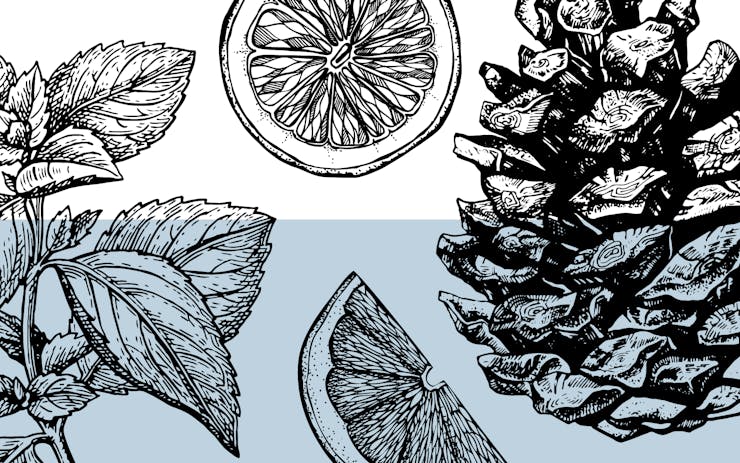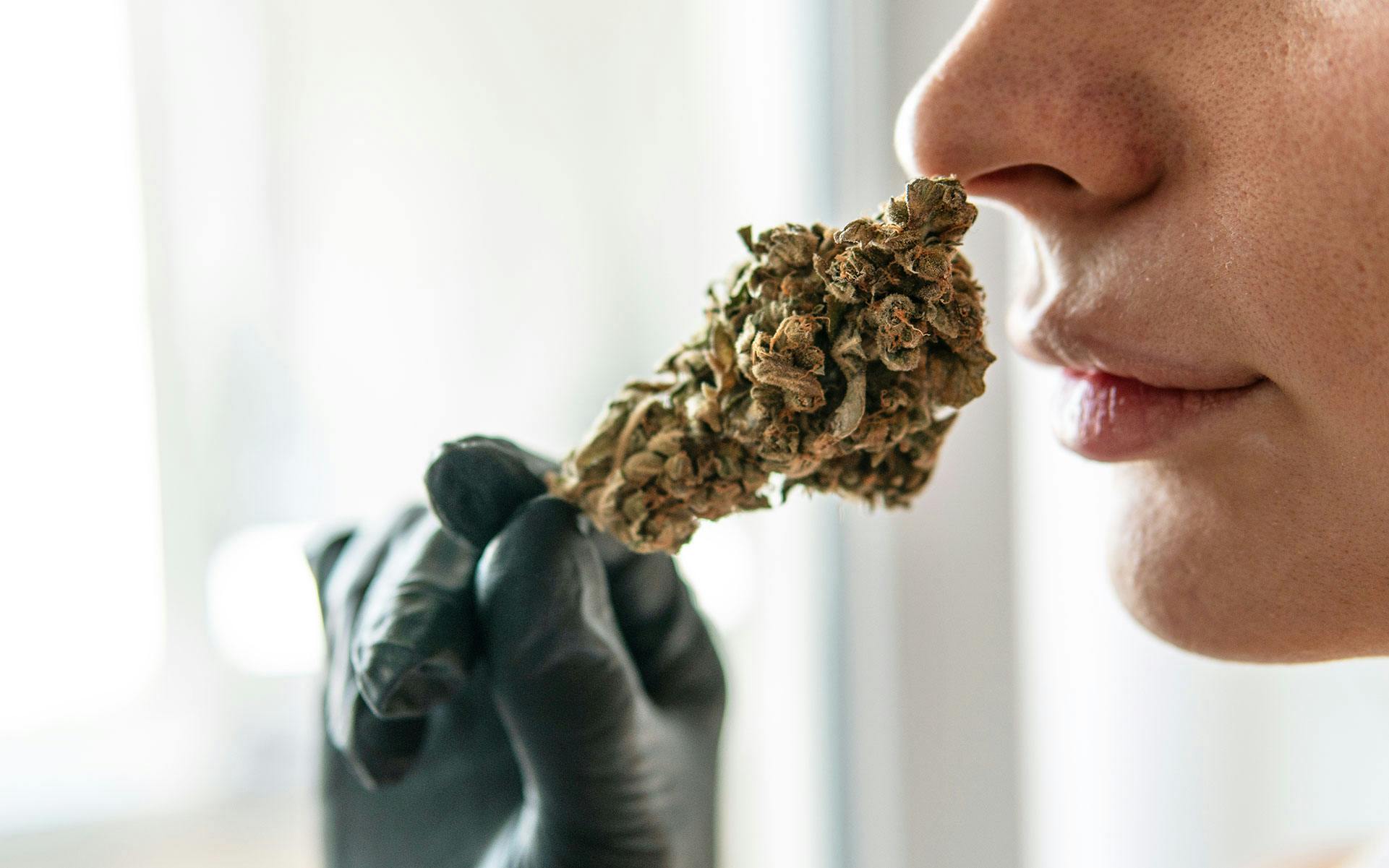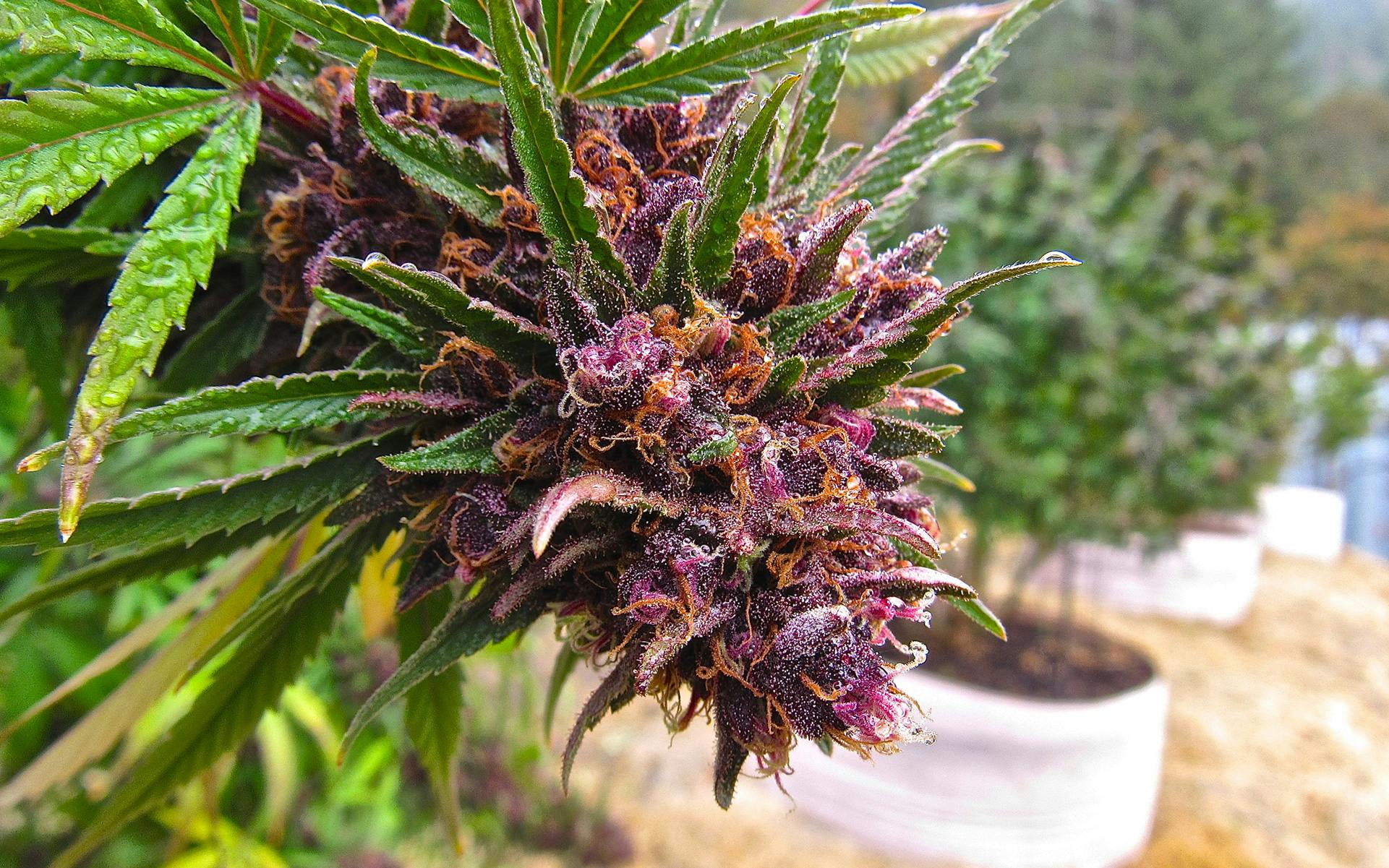Of the long list of discovered terpenes found in cannabis, only about 30 or so are relatively common in most commercial cannabis strains. Within that list, eight of the most common terpenes include: limonene, pinene, humulene, ocimene, myrcene, linalool, caryophyllene, and terpinolene. Aside from those, about 20 more sit on a list of secondary terpenes and are generally less prevalent in cannabis and less studied.
Phellandrene is one of these secondary terpenes that hasn’t received much attention from researchers. What we do know is that it represents a pair of organic compounds—alpha-phellandrene and beta-phellandrene—that are commonly derived from several eucalyptus plant species.
Phellandrene produces a minty, woody, and mildly citrus aromatic profile and it is easily absorbed, making it a fairly common additive to a host of cosmetic products. It has also been a staple in holistic Eastern medicine for a long time, used for its antifungal and antibacterial properties.
Despite the lack of extensive research, there is some on this secondary terpene.
Cannabis strains that contain phellandrene
Although this terpene is somewhat mysterious, cannabis legalization has opened up the possibility of examining it more. In a 2017 study, alpha-phellandrene was detected in the cannabis strains Trainwreck and Jack Herer. This was done by testing 233 samples from 30 cultivars from a California dispensary via gas chromatography.
In the study, phellandrene was classified as a secondary characteristic in strains containing high amounts of terpinolene. In a later model of the study, the strains Ace of Spades and SAGE were also found to have trace amounts of alpha- and beta-phellandrene.
In December, we dabbed a SAGE x Bubba Kush strain with a eucalyptus smell—the new strain Vaporu by Heisenbern in Sacramento, CA.
Phellandrene’s unique profile
Alpha- and beta-phellandrene are a pair of organic compounds that are very similar but slightly different in their chemical structure. Prior to their discovery in the early 1900s, the phellandrenes were often misidentified as limonene and pinene. Only after the compounds were tested in eucalyptus oil was it discovered that phellandrene is actually two distinct isomeric compounds instead of one. The compound is easily absorbable, making this terpene a common additive to a host of cosmetic products.
Shop highly rated dispensaries near you
Showing you dispensaries nearAlthough most prominent in eucalyptus, phellandrene also exists in the essential oils of a variety of plants including:
- Mint
- Dill
- Black pepper
- Cinnamon
- Parsley
- Pine
- Lavender
- Water fennel
- Ginger grass
The Medical Benefits of Phellandrene
A 2015 rodent model study tested the stimulating properties of phellandrene alongside limonene, showing that the two terpenes exhibit both antihyperalgesic and anti-depressive properties. However, it isn’t clear whether phellandrene would display these same characteristics in isolation.
Phellandrene is also believed to have other potential anti-cancer (in vitro study) and anti-inflammatory (rodent study) benefits. This early research doesn’t tell us much about phellandrene’s effects in humans, particularly at the trace levels in which it’s found in cannabis.







